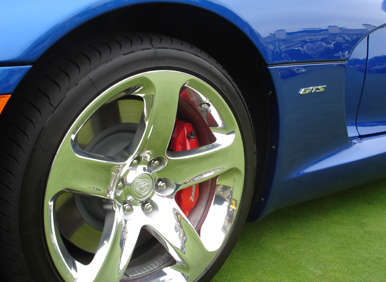Recent Articles
Popular Makes
Body Types
How To Tune Up A Car

In the past knowing how to tune up a car involved changing condensers and points and adjusting valves. Today tuning up a car is much less complicated. A tune up is normally performed every 30,000 miles or every couple of years, but the owner’s manual should specify the service intervals and what needs to be done at each one.
The first part of a tune up is to do a visual inspection to make sure that everything is in good shape. Check for leaks in any of the hoses (fuel, transmission, oil, coolant, power steering, etc.) and the exhaust system. Check the condition of other rubber parts like the belts and tires, look for bulges, cracks and wear, and check the tires’ air pressure. Check the battery for cracks in its case and corrosion on the terminals. If the battery is not a maintenance-free design, check the electrolyte level. Verify that all the lights are working and that none of the bulbs are burnt out. Replace the windshield wipers and fill the windshield washer reservoir.
Check for play in the steering and suspension systems by jacking the wheels off the ground and forcing the wheel side to side, up and down, and forwards and backwards. Remove the wheels from the car and check the brake rotors and pads to ensure that they have plenty of life left in them. While you have the wheels off lubricate the brake slides with synthetic brake lube to keep them moving freely. It’s also a good time to flush the brake fluid to eliminate the water and contaminants that may have built up in the system. Put the wheels back on and torque them to the proper specifications (normally somewhere between 70 and 100 ft/lbs for most cars). Check the parking brake and clutch cables (if equipped) for proper adjustment and lubricate them with silicone spray. While you have the silicone out give the hinges and weatherstripping a spray.
A major part of a tune up is replacing fluids and filters. An oil and filter change should be performed, and at the same time any suspension parts with grease fittings should be lubed. If you have an automatic transmission it’s a good idea to change the transmission fluid and filter. The fuel filter should be changed as well. The air filter should be replaced (or cleaned if it’s reusable). If your car is equipped with a cabin air filter it should also be replaced.
Depending on the vehicle some other items should be changed every 30,000 to 60,000 miles. The PCV valve and spark plugs (and sometimes wires) may need to be replaced either every tune up or every second tune up. Coolant should normally be changed and the engine flushed at the same time. If the vehicle is equipped with a timing belt, it is usually recommended to have it changed every second tune up as well.
If you do have an older car the distributor cap, rotor, condenser, and points should probably be changed, and valves, carburetor, ignition timing and dwell should be adjusted. No matter the age of your car a proper tune up should make the car run better and help make it last longer.
